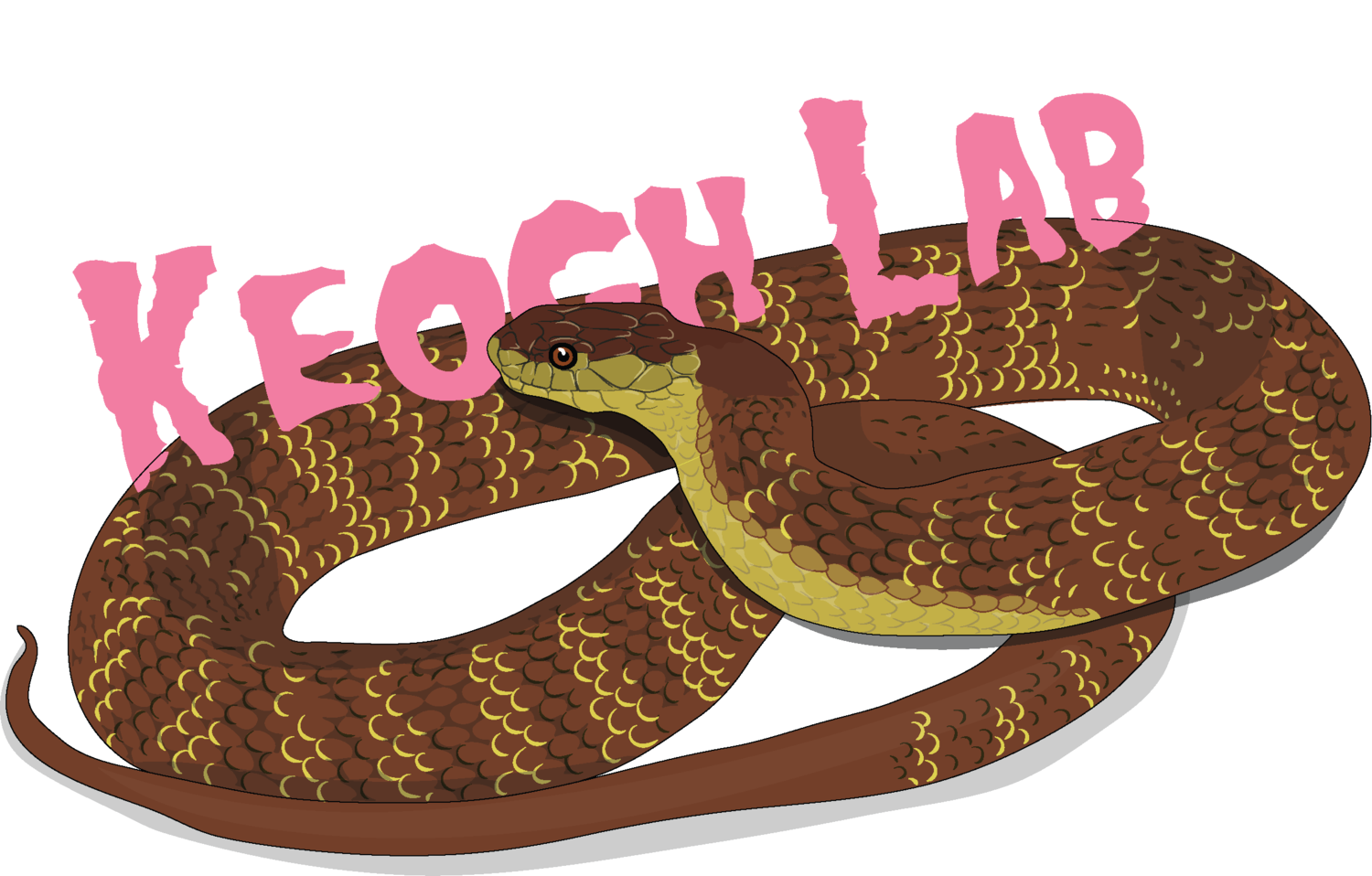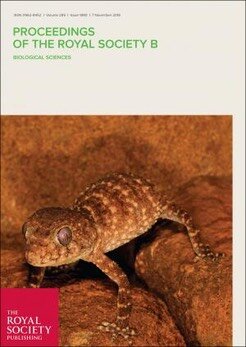

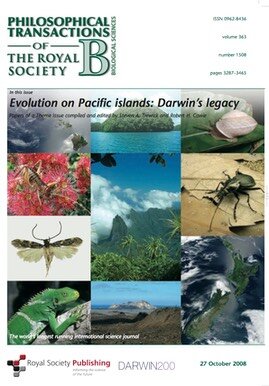

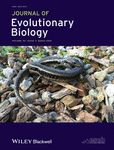
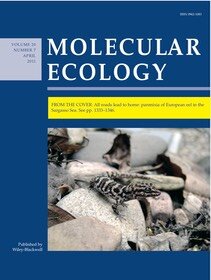


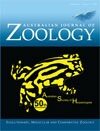

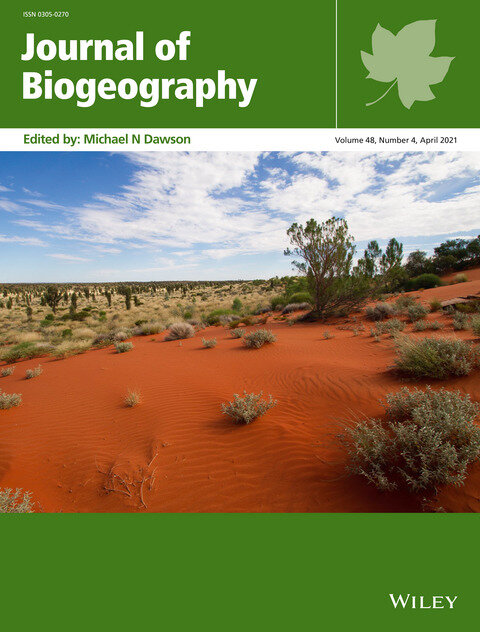




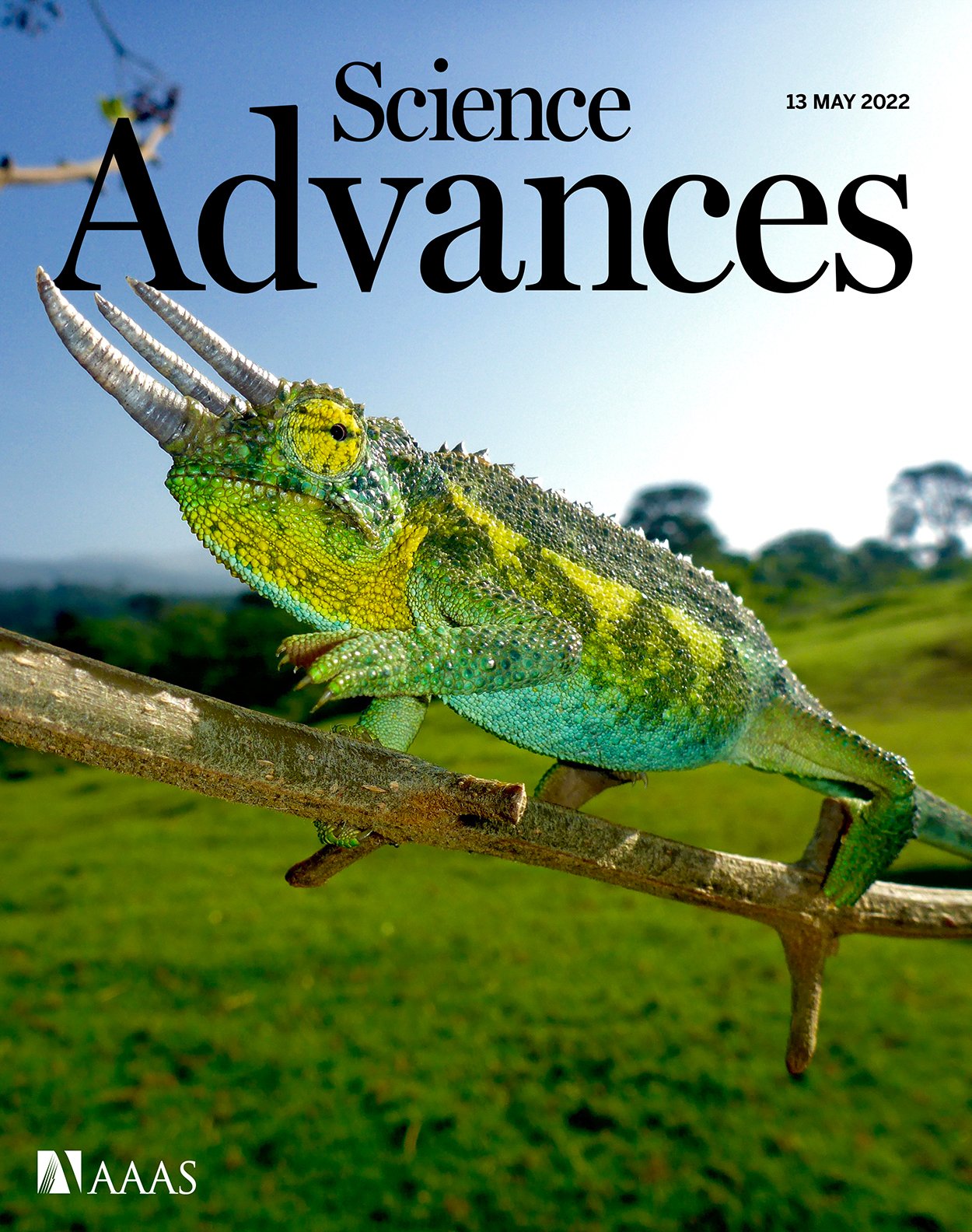


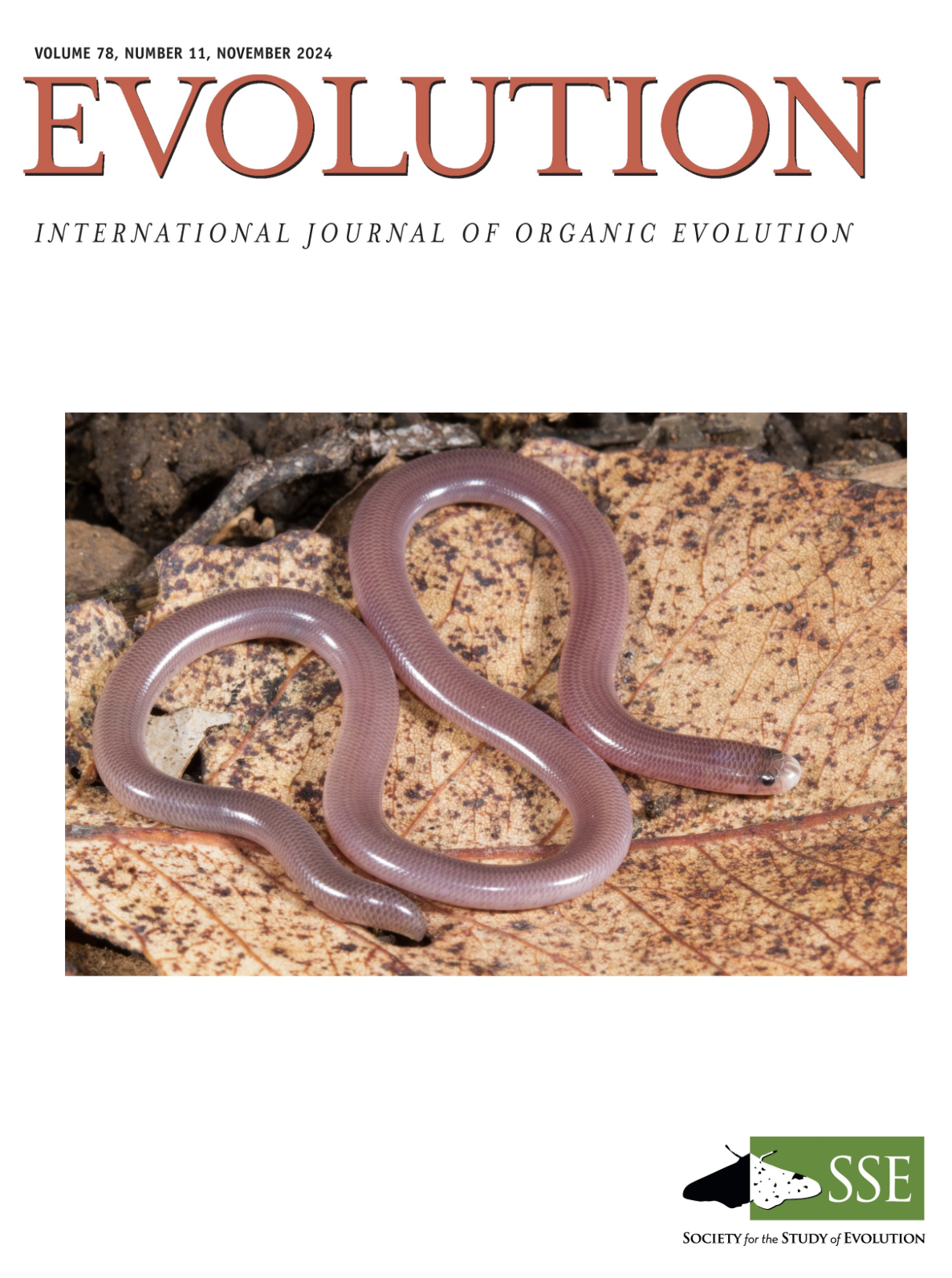
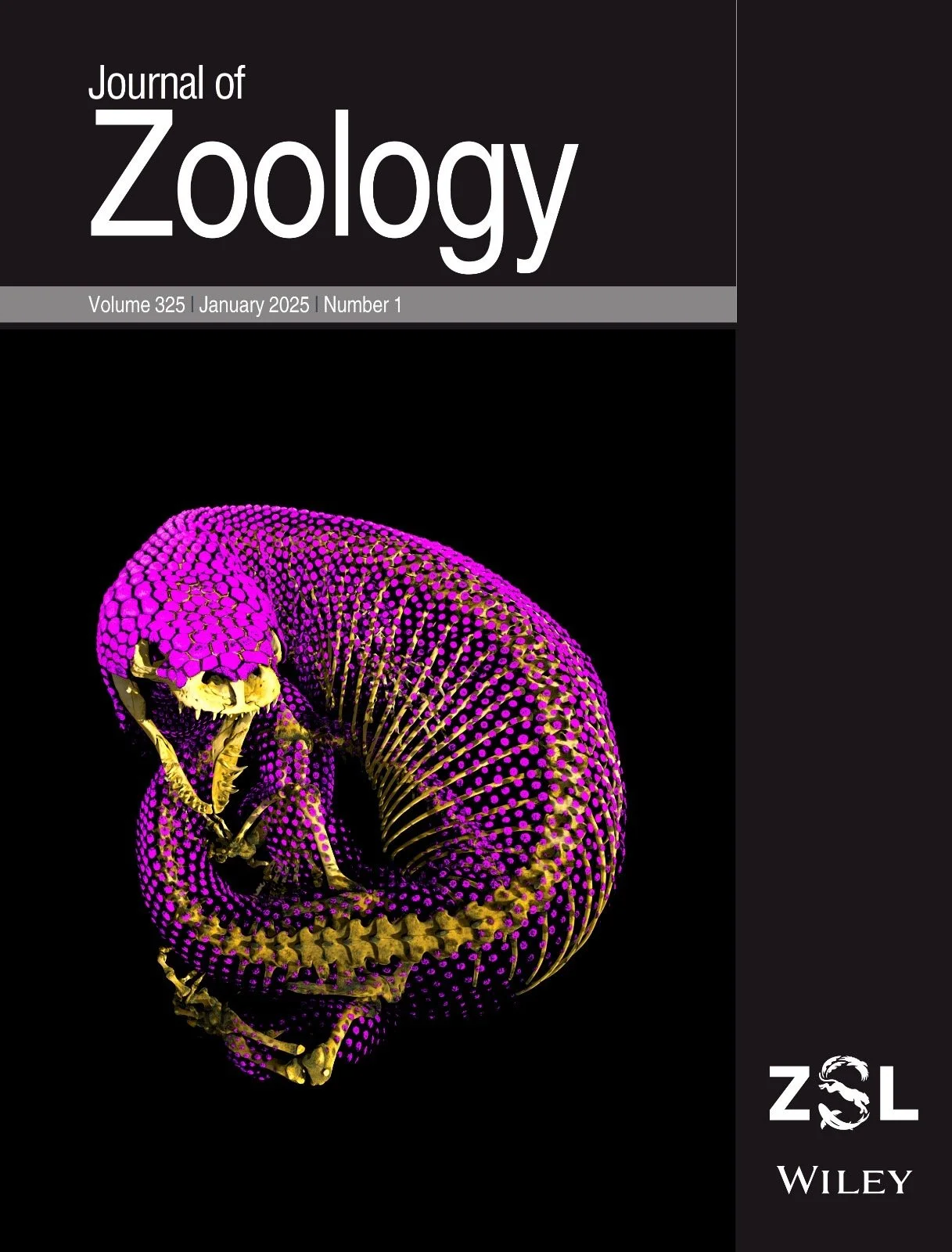
Keogh Lab Publications (last updated November 2025)
This list ONLY includes publications where all or a good chunk of the research was done in our lab. Many of the people currently in the lab have published lots of other papers based on research done for their honours, Masters, PhDs or postdocs in other labs, so please check out their individual web sites for full lists of their publications.
Keogh Lab people are noted by an underline.
PDFs for most of our papers are in this folder.
Submitted and hoping for the best:
Byrne, PG, MJ Whiting, AJ Silla, JS Keogh. ‘Nesting-assistance’: A new hypothesis for the evolution of polyandry and a test in an African foam nesting treefrog.
Torkkola JJ, S Tiatragul, ES Broady, IG Brennan, JS Keogh, DL Rabosky, S Singhal, PM Oliver. Sphenomorphini Unravelled: a phylogenomic framework and generic reassessments for Australia’s most species-rich vertebrate radiation.
Brennan IG, N Cooper, J Sumner, S Tiatragul, LG Tedeschi, ES Broady, J Melville, JS Keogh. Generalists link peaks in the shifting adaptive landscape of Australia’s dragon lizards.
Brennan, IG. Incorporating fossil uncertainty is essential to macroevolutionary inferences: Total evidence dating of Australian macropods.
In Press or Published:
260. Davidson, MJ, KR Zenger, JS Keogh, L Berger, LF Skerratt, TA Kosch. Design and amplification of a genome-wide SNP array to improve conservation outcomes in the Critically Endangered southern corroboree frog. Molecular Ecology Resources. In Press.
259. Ebel, R, J Melville, JS Keogh. Lizards in chain mail: Reconstructing the enigmatic past of dermal armour in squamate reptiles. Biological Journal of the Linnean Society. In press.
258. Pavón-Vázquez, CJ, AJ Fitch, P Doughty, SC Donnellan, JS Keogh. 2025. Integrating genomics, collections, and community science to reveal speciation in a variable monitor lizard (Varanus tristis). Systematic Biology, In press. Pre-print here.
257. Pepper, M, P Doughty, J Fletcher, JS Keogh. 2025. Molecular and morphological assessment of the widely distributed legless gecko Delma tincta Kluge (Squamata: Pygopodidae), including a taxonomic revision. Records of the Western Australian Museum. In Press.
256. Donnellan, SC, MJ Mahony, D Esquerré, I Brennan, LC Price, A Lemmon, EM Lemmon, R Günther, P Monis, T Bertozzi, JS Keogh, GM Shea, SJ Richards. 2025. Phylogenomics informs a generic revision of the Australo-Papuan treefrogs (Anura: Pelodryadidae). Zoological Journal of the Linnean Society. In Press. Early view online. You can download the paper here, and here is a table of the taxonomic changes.
255. Ebel, R, C Broeckhoven, EL Stanley, T Ramm, JS Keogh. 2025. Dermal armour in lizards: Osteoderms are more common than presumed. Zoological Journal of the Linnean Society. In Press. Early view online. And check out this great Conversation article by Roy and this Youtube video about about work.
254. Tiatragul, S, A Amey, S Hocknull, JS Keogh, E Sherratt. 2025. Beyond body length: Uncovering the drivers of vertebra number variation in Australian blindsnakes. Evolutionary Journal of the Linnean Society. In Press. Early view online.
253. Ebel, R, A Herrel, TM Schemer, JS Keogh. 2025. Review of osteoderm function and future research directions. Journal of Zoology 325:1-24.
252. Tiatragul, S., A Skeels, JS Keogh. 2024. Morphological evolution and niche conservatism across a continental a radiation of Australian blindsnakes. Evolution 78:1854-1868.
251. Brennan,IG, DG Chapple, JS Keogh, SC Donnellan. 2024. Evolutionary bursts drive morphological novelty in the world’s largest skinks. Current Biology 34: P3905-3916. Here is a fun article based on an interview Ian did.
250. Brennan,IG, S Signal, ZA Bkhetan. 2024. pipesnake: Generalized software for the assembly and analysis of phylogenomic datasets from conserved genomic loci. Bioinformatics 40:btae195. Ian has set up a detailed workflow here and a detailed wiki and tutorial are here.
249. Thuo, D, NA McGregor, SD Person, D Scopel, JS Keogh, J Kenny, JL Williams, T Guest, S Swan, S McAllen, L. Joseph. 2024. Metabarcoding clarifies the diet of the elusive and vulnerable Australian tjakura (Great Desert Skink, Liopholis kintorei). Fronteirs in Ecology and Evolution 12: 1354138.
248. Brennan,IG, AR Lemmon, EM Lemmon, CJ Hoskin, SC Donnellan, JS Keogh. 2024. Populating a continent: Phylogenomics reveal the timing of Australian frog diversification. Systematic Biology, 73:1-11.
247. Maryan B, Keogh JS, PE Bolton. 2023. Phylogeny and morphology of the Australian snake genus Neelaps Günther, 1863 (Squamata: Elapidae), with resurrection of Narophis Worrell, 1961. Australian Journal of Taxonomy 34: 1–25.
246. Tiatragul, S., A Skeels, JS Keogh. 2023. Paleoenvironmental models for Australia and the impact of aridification on blindsnake diversification. Journal of Biogeography,early view online.
245. Tiatragul, S. IG Brennan, ES Broady, JS Keogh. 2023. Australia’s hidden radiation: Phylogenomic analysis reveals rapid Miocene radiation of blindsnakes. Molecular Phylogenetics and Evolution, early view online.
244. Esquerré D, IG Brennan, SC Donnellan, JS Keogh. 2022. Evolutionary models demonstrate rapid and adaptive diversification of Australo-Papuan pythons. Biology Letters, 18: 2022036. 020220360 http://doi.org/10.1098/rsbl.2022.0360.
243. Pavón-Vázquez, CJ, D Esquerré, AJ Fitch, B Maryan, P Doughty, SC Donnellan, JS Keogh. 2022. Between a rock and a dry place: phylogenomics, biogeography, and systematics of ridge-tailed monitors (Squamata: Varanidae: Varanus acanthurus complex). Molecular Phylogenetic and Evolution, early view online.
242. Jaya, FR, JC Tanner, MR Whitehead, P Doughty, JS Keogh, C Moritz, RA Catullo. 2022. Population genomics and sexual signals support reproductive character displacement in Uperoleia (Anura: Myobatrachidae) in a contact zone. Molecular Ecology 31:4527-4543.
241. Whiting, MJ, BS Holland, JS Keogh, DWA Noble, KJ Rankin, D Stuart-Fox. 2022. Invasive chameleons released from predation display more conspicuous colors. Science Advances 8: DOI: 10.1126/sciadv.abn2415. And check out this great article in The Conversation by Martin Whiting.
240. Pavón-Vázquez, CJ, Esquerré D, JS Keogh. 2022. Ontogenetic drivers of morphological evolution in monitor lizards and allies (Squamata: Paleoanguimorpha), a clade with extreme body size disparity. BMC Ecology and Evolution 22, 15: doi.org/10.1186/s12862-022-01970-6. And check out this great blog that Carlos wrote for Nature Portfolio Ecology & Evolution.
239. Hoops, D, MJ Whiting, JS Keogh. 2022. A smaller habenula is associated with increasing intensity of sexual selection. Brain, Behaviour and Evolution doi.org/10.1159/000521750.
238. Pavón-Vázquez, CJ, IG Brennan, A Skeels, JS Keogh. 2022. Competition and geography underlie speciation and morphological evolution in Indo-Australasian monitor lizards. Evolution 76:476-495. And check out this great Digest summary authored by Till Ramm and Emily Roycroft.
237. Esquerré D, JS Keogh, D Demangel, M Morando, LJ Avila, JW Sites Jr.,F Ferri-Yáñez, AD Leaché. 2022. Rapid radiation and rampant reticulation: Phylogenomics of South American Liolaemus lizards. Systematic Biology 71:286-300.
236. Lamichhaney, S, R Catullo, JS Keogh, S Clulow, SV Edwards, T Ezaz. 2021. A bird-like genome from a frog: Mechanisms of genome size reduction in the ornate burrowing frog, Platyplectrum ornatum. Proceedings of the National Academy of Sciences USA 118: e2011649118.
235. Esquerré D, SC Donnellan, CJ Pavón-Vázquez, J Fenker, JS Keogh. 2021. Phylogeography, historical demography and systematics of the world’s smallest pythons (Pythonidae, Antaresia). Molecular Phylogenetic and Evolution161:107181.
234. Natusch, DJD, D Esquerré, JA Lyons, A Hamidy, AR Lemmon, EM Lemmon, A Riyanto, JS Keogh, SC Donnellan. 2021. Phylogenomics, biogeography and taxonomic revision of New Guinean pythons (Pythonidae, Leiopython) harvested for international trade. Molecular Phylogenetics and Evolution 158:106960.
233. Melville J, DG Chapple, JS Keogh, J Sumner, A Amey, Phil Bowles, IG Brennan, P Couper, S Donellan, P Doughty, D Edwards, RJ Ellis, D Esquerré, J Fenker, M Gardner, A Georges, M Haines, CJ Hoskin, M Hutchinson, C Moritz, J Nankivell, P Oliver, CJ Pavón-Vázquez, M Pepper, DL Rabosky, K Sanders, G Shea, S Singhal, J Worthington Wilmer, R Tingley. 2021. A return-on-investment approach for prioritisation of rigorous taxonomic research needed to inform responses to the biodiversity crisis. Plos Biology 19(6): e3001210. And check out the article about this by Jane Melville and Reid Tingley in The Conversation and this related article by Kevin Thiele and Jane Melville in The Conversation.
232. Catullo, RA, JS Keogh. 2021. Seen only once: an evolutionarily distinct species of Toadlet (Uperoleia: Myobatrachidae) from the Wessel Islands of northern Australia. Zootaxa 5057:52-68.
231. Pavón-Vázquez, C, IG Brennan, JS Keogh. 2021. A comprehensive approach to detect hybridisation sheds light on the evolution of Earth’s largest lizards. Systematic Biology 70:877-890.
230. Pepper, M, JS Keogh. 2021. Life in the ‘dead heart’ of Australia: How the geohistory of the deserts shaped genetic diversity of arid zone lizards. Journal of Biogeography 48:716-746.
229. Noble, DWA, F Kar, S Nakagawa, JS Keogh, MJ Whiting. 2021. Sexual selection on performance traits in an Australian lizard with alternative reproductive tactics. Journal of Evolutionary Biology 34:451-464.
228. Kelleher, SR, AJ Silla, BC Scheele, JS Keogh, DA Hunter, JA Endler, PG Byrne. 2021. Disease influences male advertisement and mating outcomes in an endangered amphibian. Animal Behaviour 173:145-157.
227. DG Chapple, +98 additional co-authors including JS Keogh, Shai Meiri. 2021. Conservation status of the world’s skinks (Scincidae): Taxonomic and geographic patterns of extinction risk. Biological Conservation, early view online.
226. Byrne, PG, JS Keogh, D O’Brien, JD Gaitan-Espitia, D’Obrien, AJ Silla. 2021. Evidence that genetic compatibility underpins female mate choice in a monandrous amphibian. Evolution 75:529-541.
225. Brennan, IG. AR Lemmon, EM Lemmon, DM Portik, V Weijola, L Welton, SC Donnellan, JS Keogh. 2021. Phylogenomics of monitor lizards and the role of competition in dictating body size disparity. Systematic Biology 70:120-132.
224. Hime, PM, AR Lemmon, EM Moriarty Lemmon, E Scott-Prendini, JM Brown, RC Thomson, JD Kratovil, BP Noonan, RA Pyron, PLV Peloso, ML Kortyna, JS Keogh, SC Donnellan, RL Mueller, CJ Raxworthy, K Kunte, R Santiago, S Das, N Gaitonde, DM Green, J Labisko, J Che, DW Weisrock. 2021. Phylogenomics uncovers ancient gene tree discordance in the amphibian tree of life. Systematic Biology 70:49-66.
223. Eastwood, JA, P Doughty, MN Hutchinson, M Pepper. 2020. Revision of Lucasium stenodactylus (Boulenger, 1896; Squamata: Diplodactylidae), with the resurrection of L. woodwardi (Fry, 1914) and the description of a new species from south-central Australia. Records of the Western Australian Museum 35:063-086.
222. Geyle, HM, R Tingley, AP Amey, H Cogger, PJ Couper, M Cowan, MD Craig, P Doughty, DA Driscoll, RJ Ellis, JP Emery, A Fenner, MG Gardner, ST Garnett., GR Gillespie, MJ Greenlees, CJ Hoskin, JS Keogh, R Lloyd, J Melville, PJ McDonald, DR Michael, NJ Mitchell, C Sanderson, GM Shea, J Sumner, E Wapstra, JCZ Woinarski, D Chapple. 2020. Reptiles on the brink: identifying the Australian terrestrial snake and lizard species most at risk of extinction. Pacific Conservation Biology 27: 3-12. Check out the great interview on this by Dave Chapple. And also the great summary in The Conversation.
221. Vidal-García, M., JC O'Hanlon, GJ Svenson, KDL Umbers. 2020. The evolution of defensive displays in praying mantises. Proceedings of the Royal Society B 287: 20201016.
220. Maryan, B, IG Brennan, MN Hutchinson, LS Geidans. 2020. What's under the hood? Phylogeny and taxonomy of the snake genera Parasuta Worrell and Suta Worrell (Squamata: Elapidae), with a description of a new species from the Pilbara, Western Australia. Zootaxa 4778:1-47.
219. Vidal-Garcia, M, L Bandara, JS Keogh. 2020. ShapeRotator: Standardised Rigid Rotations of Articulated Three-Dimensional Structures. R package version 0.1.0. https://CRAN.R-project.org/package=ShapeRotator.
218. Novikova, PY, IG Brennan, W Booker, M Mahony, P Doughty, AR Lemmon, EM Lemmon, JD Roberts, L Yant, Y Van de Peer, JS Keogh, SC Donnellan. 2020. Polyploidy breaks speciation barriers in Australian burrowing frogs Neobatrachus. PLOS Genetics. https://doi.org/10.1371/journal.pgen.1008769
217. Esquerré D, SC Donnellan, IG Brennan, AR Lemmon, EM Lemmon, H Zaher, F Grazziotin, JS Keogh. 2020. Phylogenomics, biogeography and morphometrics reveal rapid phenotypic evolution in pythons after crossing Wallace’s line. Systematic Biology 69:1039-1051.
216. Skeels, A, D Esquerré & M Cardillo. 2020. Alternative pathways to diversity across ecologically distinct lizard radiations. Global Ecology and Biodiversity, 29: 454-469.
215. Burbrink, FT, FG Grazziotin, RA Pyron, D Cundall, SC Donnellan, F Irish, JS Keogh, F Kraus, RW Murphy, B Noonan, S Ruane, CJ Raxworthy, AR Lemmon, EC Moriarty Lemmon, H Zaher. 2020. Interrogating genomic-scale data for Squamata (lizards, snakes, and amphisbaenians) shows no support for key traditional morphological relationships. Systematic Biology 69:502-520.
214. Natusch, DJD, D Esquerré, JA Lyons, A Hamidy, AR Lemmon, EM Lemmon, A Riyanto, JS Keogh, SC Donnellan. Species delimitation and systematics of the green pythons (Morelia viridis complex) of Melanesia and Australia. 2020. Molecular Phylogenetics and Evolution 142:106640.
213. Esquerré, D, D Ramirez-Álvarez, CJ Pavón-Vázquez, J Troncoso-Palacios, CF Garín, JS Keogh, AD Leaché. 2019. Speciation across mountains: phylogenomics, species delimitation and taxonomy of the Liolaemus leopardinus clade (Squamata, Liolaemidae). Molecular Phylogenetics and Evolution 139:106524.
212. Chapple, DG, R Tingley, NJ Mitchell, SL MacDonald, JS Keogh, GM Shea, P Bowles, NA Cox, JCZ Woinarski. The Action Plan for Australian Lizards and Snakes 2017. Pp. 1-663. CSIRO Publishing.
211. O’Brien, D, JS Keogh, AJ Silla, PG Byrne. 2019. Females prefer to mate with more related males in wild red-backed toadlet (Pseudophryne coriacea). Behavioural Ecology 30:928-937.
210. Esquerré, D, IG Brennan, RA Catullo, F Torres-Perez, JS Keogh. 2019. How mountains shape biodiversity: The role of the Andes in biogeography, diversification and reproductive biology in South America’s most species rich lizard radiation (Squamata: Liolaemidae). Evolution 73:214-230. Check out the ABC TV News story here, and also these nice articles on the ABC, iLife, and lots of others. There was also a very nice Evolution Highlight done where they interviewed Damien.
209. Sherratt, E, M Anstis, JS Keogh. 2018. Ecomorphological diversity of Australian tadpoles. Ecology and Evolution 8:12929-12939.
208. Brennan, IG, JS Keogh. 2018. Miocene biome turnover drove conservative body size evolution across Australian vertebrates. Proceedings of the Royal Society, B 285:20181474.
207. Doughty P, AM Bauer, M Pepper, JS Keogh. 2018. Spots before the eyes: Revision of the saxicoline geckos of the Gehyra punctata (Squamata: Gekkonidae) species complex in the Pilbara region of Western Australia. Records of the Western Australian Museum 33:1-50.
206. Kealley, L, P Doughty, M Pepper, JS Keogh, M Hillyer, J Huey. 2018. Conspicuously concealed: Revision of the arid clade of the Gehyra variagata (Gekkonidae) species group in Western Australia using an integrative molecular and morphological approach, with the description of five cryptic species. PeerJ 6:e5334.
205. Attard, MRG, E Sherratt., P McDonald, I Young, M Vidal-García, S Wroe. 2018. A new, three-dimensional geometric morphometric approach to assess egg shape. PeerJ 6:e5052.
204. Pepper M, J Sumner , IG Brennan, K Hodges, A Lemmon, E Lemmon, G Peterson, DL Rabosky, L Schwarzkopf, IAW Scott, G Shea, JS Keogh. 2018. Speciation in the mountains and dispersal by rivers: Molecular phylogeny of Eulamprus water skinks and the biogeography of Eastern Australia. Journal of Biogeography 45:2040-2052.
203. O’Brien, D, JS Keogh, AJ Silla, PG Byrne. 2018. The unexpected genetic mating system of the red-backed toadlet (Pseudophryne coriacea); a species with prolonged terrestrial breeding and cryptic reproductive behaviour. Molecular Ecology 27:3001-3015.
202. Hoops D, E Desfilis, JFP Ullmann, AL Janke, T Stait-Gardner, GA Devenyi,, WS Price, L Medina, MJ Whiting, JS Keogh. 2018. A 3D MRI-based atlas of a lizard brain. Journal of Comparative Neurology 16:2511-2547.
201. Vidal-Garcia, M, L Bandara, JS Keogh. 2018. ShapeRotator: an R tool for standarized rigid rotations of articulated three-dimensional structures with application for geometric morphometrics. Ecology and Evolution 8:4669-4675. And check out the detailed “how to” wiki that Marta put together.
200. Rosauer, D, M Byrne, M Blom, D Coates, SC Donnellan, P Doughty, JS Keogh, J Kinloch, RJ Laver, C Myers, PM Oliver, S Potter, D Rabosky, A Afonso Silva, J Smith, C Moritz. 2018. Real-world conservation planning for evolutionary diversity in the Kimberley, Australia, sidesteps uncertain taxonomy. Conservation Letters e12438.
199. Oliver PM, RM Brown, F Kraus, EN Rittmeyer, SC Travers, C Siler. 2018. Lizards of the Lost Arcs: mid-Cenozoic diversification, persistence and ecological marginalisation in the West Pacific. Proceedings of the Royal Society B 285:1871.
198. Moritz, C, RC Pratt, S Bank, G Bourke, JG Bragg, SC Donnellan, P Doughty, RJ Laver, JS Keogh, S Potter, L Teasdale, LG Tedeschi, PM Oliver. 2018. Cryptic lineage diversity, body size divergence and sympatry in a species complex of Australian lizards (Gehyra). Evolution 72:54-66. And check out the nice short digest review of the paper in Evolution.
197. Nielsen, SV, PM Oliver. 2017. Morphological and genetic evidence for a new karst specialist lizard from New Guinea (Cyrtodactylus: Gekkonidae). Royal Society Open Science 4:170781.
196. Esquerré, D, E Sherratt, JS Keogh. 2017. Evolution of extreme ontogenetic allometric diversity and heterochrony in pythons, a clade of giant and dwarf snakes. Evolution 71:2829-2844.
195. Oliver, PM, A Hugall. 2017. Phylogenetic evidence for mid-Tertiary turnover in a diverse continental biota. Nature Ecology & Evolution 1:1896-1902. And check out this nice write up about the paper. And also check out this video from the Australian Academy of Sciences. And it got the cover too, with a photo by our own Damien Esquerre.
194. Oliver PM, S Travers, JQ Richmond, P Pikacha, RN Fisher. 2017. At the end of the line: independent overwater colonisations of the Solomon Islands by a hyperdiverse trans-Wallacean gecko lineage (Cyrtodactylus). Zoological Journal of the Linnean Society 182:681-694.
193. Head, M, A Kahn, J Henshaw, JS Keogh, MJ Jennions. 2017. Sexual selection on body size, genital length and heterozygosity: consistency across habitats and social settings. Journal of Animal Ecology 86:1458-1468.
192. Vidal-Garcia, M, JS Keogh. 2017. Invasive cane toads are unique in shape but overlap in ecological niche compared to Australian native frogs. Ecology and Evolution 7:7609-7619.
191. Sherratt, E, M Vidal-Garcia, M Anstis, JS Keogh. 2017. Adult frogs and their tadpoles have different macroevolutionary patterns across the Australian continent. Nature Ecology and Evolution 1:1385-1391.
190. Hoops D, M Vidal-Garcia, JFP Ullmann, AL Janke, T Stait-Gardner, D Duchene, WS Price, MJ Whiting, JS Keogh. 2017. Evidence for concerted and mosaic brain evolution in dragon lizards. Brains, Behavior and Evolution 90:211-223. Dan got “editor’s choice” and made the cover.
Dan also later won the 2017 Thomas Karger Award for Excellence in Evolutionary Neuroscience for this paper and he was invited to author a perspectives piece for the journal Hoops, D. 2018. The secret caverns of the dragon’s brain: Current and potential contributions of lizards to evolutionary neuroscience. Brain, Behaviour and Evolution 91:103.
189. Brennan, I.G., Bauer, A.M., Van Tri, N., Wang, Yy., Wang, Wz., Zhang, YP., Murphy, R.W. 2017. Barcoding utility in a mega-diverse, cross-continental genus: keeping pace with Cyrtodactylus geckos. Scientific Reports 7:5592.
188. Vidal-Garcia, M, JS Keogh. 2017. Phylogenetic conservatism in skulls and evolutionary lability in limbs - morphological evolution across an ancient frog radiation is shaped by diet, locomotion and burrowing. BMC Evolutionary Biology 17:165.
187. Vertucci, V, M Pepper, D Edwards, JD Roberts, N Mitchell, JS Keogh. 2017. Evolutionary and natural history of the Turtle Frog, Myobatrachus gouldii, a bizarre frog in the southwestern Australian biodiversity hotspot. PLoS ONE 12:e0173348.
186. Brennan, IG, PM Oliver. 2017. Mass turnover and recovery dynamics of a diverse Australian continental radiation. Evolution 71:1352-1365.
185. Pepper, M, JS Keogh, DG Chapple. 2017. Molecular biogeography of Australian and New Zealand reptiles and amphibians. Pp 295-328. In: Handbook of Australasian Biogeography. Malte C. Ebach, Editor. CRC Press.
184. Vega-Trejo, R, M Head, JS Keogh, MJ Jennions. 2017. Experimental evidence for sexual selection against inbred males. Journal of Animal Ecology 86:394-404.
183. Piggott, M. 2017. An environmental DNA assay for detecting Macquarie perch, Macquaria australasica. Conservation Genetics Resources 9:257-259.
182. Pepper, M, DG Hamilton, T Merkling, N Svedin, B Cser, R Catullo, SR Pryke, JS Keogh. 2017. Phylogeographic structure across one of the largest intact tropical savannas: Molecular and morphological analysis of Australia’s iconic frilled lizard Chlamydosaurus kingii. Molecular Phylogenetics and Evolution. 106:217-227.
181. Hoops, D, JFP Ullmann, AL Janke, M Vidal-Garcia, T Merkling, T Stait-Gardner, Y Dwihapsari, T , WS Price, JA Endler, MJ Whiting, JS Keogh. 2017. Sexual selection predicts brain structure in dragon lizards. Journal of Evolutionary Biology 30: 244-256.
180. Bragg, JG, S Potter, S Singhal, K Bi, R Catullo, SC Donnellan, MDB Eldridge, L Joseph, JS Keogh, P Oliver, K Rowe, C Moritz. Resources for phylogenomic analyses of Australian terrestrial vertebrates. 2017. Molecular Ecology Resources 17:869-876.
179. Openshaw, G, D D’Amore, Vidal-Garcia, M, JS Keogh. 2017. Combining geometric morphometric analyses of multiple 2D obervation views improves interpretation of evolutionary allometry and shape diversification in monitor lizard (Varanus) crania. Biological Journal of the Linnean Society 120:539-552.
178. Wylie, DR, D Hoops, JW Aspden, AN Iwaniuk. 2016. Zebrin II is expressed in sagittal stripes in the cerebellum of dragon lizards (Ctenophorus sp.). Brain, Behaviour and Evolution 88:177-186.
177. Clulow, S, M Anstis, JS Keogh, R Catullo. 2016. A new species of Australian frog (Myobatrachidae: Uperoleia) from the New South Wales mid-north coast sandplains. Zootaxa 4184:285-315.
176. Piggott, M. 2016. Evaluating the effects of laboratory protocols on eDNA detection probability for an endangered freshwater fish. Ecology and Evolution 6:2739-2750.
175. Schwanz, LE. 2016. Parental thermal environment alters offspring sex ratio and fitness in an oviparous lizard. Journal of Experimental Biology 219:2349-2357.
174. Esquerré, D, JS Keogh. 2016. Parallel selective pressures drive convergent diversification of phenotypes in pythons and boas. Ecology Letters 19:800-807.
173. Booksmythe, I, ML Head, JS Keogh, MD Jennions. 2016. Fitness consequences of artificial selection on relative male genital size. Nature Communications 7:11597.
172. Couper, P, SR Peck, JP Emery, JS Keogh. 2016. Two snakes from eastern Australia (Serpentes: Elapidae): A revised concept of Antaioserpens warro (De Vis) with a redescription of A. albiceps (Boulenger). Zootaxa 4097: 396-408.
171. Merkling, T, DG Hamilton, B Cser, N Svendin, SR Pryke. 2016. Proximate mechanisms of colour variation in the frillneck lizard: Geographical differences in pigment contents of an ornament. Biological Journal of the Linnean Society 117:503-515.
170. Edwards, DL, J Melville, L Joseph, JS Keogh. 2015. Ecological divergence, adaptive diversification and the evolution of social signaling traits: An emperical study in arid Australian lizards. The American Naturalist 186:E144-E161.
169. Vidal-Garcia, M, JS Keogh. 2015. Convergent evolution across the Australian continent: Ecotype diversification drives morphological convergence in two distantly related clades of Australian frogs. Journal of Evolutionary Biology 28: 2136-2151. Cover photo by our own Damien Esquerre!
168. Whiting, MJ, WR Branch, M Pepper, JS Keogh. 2015. A new species of spectacularly coloured flat lizard Platysaurus (Squamata: Cordylidae: Platysaurinae) from southern Africa. Zootaxa 3986:173-192. This paper got lots of media attention, since we named it after David Attenborough! This is the best one from the BBC and it even has some video of the man.
167. MacDonald, AJ, TI Knopp, M Pepper, JS Keogh, SD Sarre. 2015. The first complete mitochondrial genome of a Pygopodidae (Aprasia parapulchella Kluge). Australian Journal of Zoology 63:111-114.
166. Troncoso-Palacios, J, HA Diaz, D Esquerre, FA Urra. 2015. Two new species of the Liolaemus elongatus-kriegi complex (Iguania, Liolaemidae) from Andean highlands of southern Chile. ZooKeys 500: 83-109.
165. Rhodin, A.G.J., H. Kaiser, P.P. van Dijk, W. Wüster, M. O’Shea, M. Archer, M. Auliya, L. Boitani, R. Bour, V. Clausnitzer, T. Contreras-MacBeath, B.I. Crother, J.M. Daza, C.A. Driscoll, O. Flores-Villela, J. Frazier, U. Fritz, A. Gardner, C. Gascon, A. Georges, F. Glaw, F.G. Grazziotin, C.P. Groves, G. Haszprunar, P. Havaš, J.M. Hero, M. Hoffmann, M.S. Hoogmoed, B.D. Horne, J.B. Iverson, M. Jäch, C.L. Jenkins, R.K.B. Jenkins, A.R. Kiester, J.S. Keogh, T.E. Lacher Jr., J.E. Lovich, L. Luiselli, D.L. Mahler, D. Mallon, R. Mast, R.W. Mcdiarmid, J. Measey, R.A. Mittermeier, S. Molur, V. Mossbrugger, R. Murphy, D. Naish, M. Niekisch, H. Ota, J.F. Parham, M.J. Parr, N.J. Pilcher, R.H. Pine, A.B. Rylands, J.G. Sanderson, J. Savage, W. Schleip, G.J. Scrocchi, H.B. Shaffer, E.N. Smith, R. Sprackland, S.N. Stuart, H. Vetter, L.J. Vitt, T. Waller, G. Webb, E.O. Wilson, H. Zaher, and S. Thomson (Corresponding Author). 2015. Comment on Spracklandus Hoser, 2009 (Reptilia, Serpentes, ELAPIDAE): request for confirmation of the availability of the generic name and for the nomenclatural validation of the journal in which it was published. (Case 3601; see BZN 70: 234–237; 71: 30–38, 133–135, 181–182, 252–253). Bulletin of Zoological Nomenclature 72:65-78.
164. Hoops, D. 2015. A perfusion protocal for lizards, including a method for brain removal. Methods X 2:165-173.
163. Binning, SA, DG Roche. 2015. Water flow and fin shape polymorphism in coral reef fishes. Ecology 96:828-839.
162. Oliver, P, JS Keogh, C Moritz. 2014. New approachs to cataloguing and understanding evolutionary diversity of Australian reptiles. Australian Journal of Zoology 62:417-430. Cover illustration by our own Erin Walsh!
161. Oliver, PM, PJ Couper, M Pepper. 2014. Transitions between monsoonal and arid biomes revealed by systematic revision of a complex of Australian geckos (Diplodactylus; Diplodactylidae). Plos One 9:e111895.
160. Troncoso-Palacios, J, D Esquerré. 2014. A new species of Phymaturus of the P. mallimaccii group from the Andes of central Chile (Iguana: Liolaemidae). Phyllomedusa 13:3-15.
159. Esquerré, D, JS Keogh, L Schwanz. 2014. Direct effects of incubation temperature on morphology and temperature-dependent behaviors in jacky dragons (Amphibolurus muricatus). Journal of Thermal Biology 43:33-39.
158. Catullo RA, JS Keogh. 2014. Aridification drove repeated episodes of diversification between Australian biomes: Evidence from a multi-locus phylogeny of Australian toad lets (Uperoleia: Myobatrachidae). Molecular Phylogenetics and Evolution 79: 106-117.
157. Pepper, M, JS Keogh. 2014. 2014. Biogeography of the Kimberley, Western Australia: A review of landscape evolution and biotic response in an ancient refugium. Journal of Biogeography 41:1443-1455.
156. Shine, R, C Spencer, JS Keogh. 2014. Morphology, reproduction, and diet in Australian and Papuan death adders (Acanthophis, Elapidae). Plos One 9:e94216.
155. Binning SA, JI Barnes, JN Davies, PRY Backwell, JS Keogh, DG Roche. 2014. Ectoparasites modify escape behaviour, but not performance, in a coral reef fish. Animal Behaviour 93:1-7.
154. Noble, DWA, SE McFarlane, JS Keogh, MJ Whiting. 2014. Maternal and additive genetic effects contribute to variation in offspring traits in a lizard. Behavioral Ecology 25:633-640.
153. Esquerré, D, J Troncoso-Palacios, C Garín, H Núnez. 2014. The missing leopard lizard: Liolaemus ubaghsi sp. nov., a new species of the leopardinus clade (Reptilia: Squamata: Liolaemidae) from the Andes of the O’Higgins Region in Chile. Zootaxa 3815:507-525.
152. Catullo, RA, P Doughty, JS Keogh. 2014. A new frog species (Myobatrachidae: Uperoleia) from the Northern Deserts region of Australia, with a re-description of U. trachyderma. Zootaxa 3753:251-262.
151. Pepper, M, MD Marquero, MJ Whiting, JS Keogh. 2014. A multi-locus molecular phylogeny for Australia’s iconic Jacky dragon (Agamidae:Amphibolurus muricatus): Phylogeographic structure along the Great Dividing Range of south-eastern Australia. Molecular Phylogenetics and Evolution 71:149-156.
150. Vidal-Garcia, M., PG Byrne, JD Roberts, JS Keogh. 2014. The role of phylogeny and ecology in shaping morphology in 21 genera and 127 species of Australo-Papuan myobatrachid frogs. Journal of Evolutionary Biology 27:181-192.
149. Openshaw,GH, JS Keogh. 2014. Head shape evolution in monitor lizards (Varanus): Interactions between extreme body size disparity, phylogeny and ecology. Journal of Evolutionary Biology 27:363-373.
148. Rosauer, D, S Ferrier, KJ Williams, G Manion, JS Keogh, SW Laffan. 2014. Phylogenetic generalised dissimilarity modelling: A new approach to analysing and predicting spatial turnover in the phylogenetic composition of communities. Ecography 37:21-32.
147. Catullo, RA, R Lanfear, P Doughty, JS Keogh. 2014. The biogeographic boundaries of northern Australia: evidence from ecological niche models and a multi-locus phylogeny of Toadlets (Uperoleia: Myobatrachidae). Journal of Biogeography 41:659-672.
146. Pepper, M, P Doughty, MK Fujita, C Moritz, JS Keogh. 2013. Speciation on the rocks: Integrated systematics of the Heteronotia spelea species complex from western and central Australia. Plos One 8:e78110.
145. Morrison, SF, PS Harlow, JS Keogh. 2013. Spatial ecology of the critically endangered Fijian Crested Iguana, Brachylophus vitiensis, in an extremely dense population: Implications for conservation. Plos One 8:e73127.
144. Noble, DWA, K Wechmann, JS Keogh, MJ Whiting. 2013. Behavioral and morphological traits interact to promote the evolution of alternative reproductive tactics in a lizard. The American Naturalist 182:726-742.
143. Pavlova A, N Amos, P Sunnucks, K Loynes, JJ Austin, JS Keogh, G Stone, J Nicholls, L Joseph. 2013. Perched at the mito-nuclear crossroads: divergent mitochondrial lineages correlate with environment in the face of ongoing nuclear gene flow in an Australian bird. Evolution 67:3412-3428.
142. Noble, DWA, JS Keogh, MJ Whiting. 2013. Multiple mating in a lizard increases fecundity but provides no evidence for genetic benefits. Behavioral Ecology 24:1128-1137.
141. Keogh, JS, KDL Umbers, EE Wilson, J Stapley, MJ Whiting. 2013. Influence of alternate reproductdive tactics and pre- and postcopulatory sexual selection on paternity and offspring performance in a lizard. Behavioural Ecology and Sociobiology 67:629-638.
140. Pepper, M, P Doughty, JS Keogh. 2013. Geodiversity and endemism in the iconic Australian Pilbara region: A review of landscape evolution and biotic response in an ancient refugium. Journal of Biogeography 40:1225-1239. And it was in the news..
139. Bohm, M et al. (213 authors, including JS Keogh). 2013. The conservation status of the World’s reptiles. Biological Conservation 157:372-385.
138. Binning, SA, DG Roche, C Layton. 2013. Ectoparasites increase swimming costs in a coral reef fish. Biology Letters 9:20120927.
137. Osborne, L, KDL Umbers, JS Keogh. 2013. The effects of perch height, time in residence and distance from opponent on aggressive display in male lizards. Acta Ethologica 16:41-46.
136. Umbers, KDL, MD Jennions, MG Gardner, JS Keogh. 2012. Twenty-five new polymorphic microsatellites for the eastern mosquitofish, Gambusia holbrooki (Actinopterygii: Poeciliidae), an invasive species in Australia. Australian Journal of Zoology 60:235-237.
135. Umbers, KDL, L Osborne, JS Keogh. 2012. The effects of residency and body size on contest initiation and outcome in the territorial dragon, Ctenophorus decresii. Plos One 7:e47143.
134. Osborne, K, KDL Umbers, PRY Backwell, JS Keogh. 2012. Male tawny dragons use throat patterns to recognize rivals. Naturwissenschaften 99:869-872.
133. Edwards, DL, JS Keogh, LL Knowles. 2012. Effects of vicariant barriers, habitat stability, population isolation and environmental features on species divergence in the south-western Australian coastal reptile community. Molecular Ecology 21:3809-3822.
132. Keogh, JS, DWA Noble, EE Wilson, MJ Whiting. 2012. Activity predicts male reproductive success in a polygynous lizard. Plos One 7:e38856.
131. Kay G, JS Keogh. 2012. Molecular phylogeny and morphological revision of the Ctenotus labillardieri (Reptilia: Squamata: Scincidae) species group and a new species of immediate conservation concern in the southwestern Australian biodiversity hotspot. Zootaxa 3390:1-18.
130. Lukoschek, V, JS Keogh, JC Avise. 2012. Evaluating fossil calibrations for dating phylogenies in light of rates of molecular evolution: a comparison of three approaches. Systematic Biology 61:22-43.
129. Hoskin CJ & Aland K. 2011. Two new frog species (Microhylidae: Cophixalus) from boulder habitats on Cape York Peninsula, north-east Australia. Zootaxa 3027: 39–51.
128. Chapple DG, Hoskin CJ , Chapple SNJ & Thompson MB. 2011. Phylogeographic divergence in the widespread delicate skink (Lampropholis delicata ) corresponds to dry habitat barriers in eastern Australia. BMC Evolutionary Biology 11: 191-208.
127. Loynes, K, L Joseph, JS Keogh. 2011. Circumscription, diagnosis and description of a subfamily of Australo-Papuan robins. Zootaxa 3106:67-68.
126. Pepper, M, P Doughty MN Hutchinson, JS Keogh. 2011. Ancient drainages divide cryptic species in Australia’s arid zone: Morphological and multi-gene evidence for four new species of Beaked geckos (Rhynchoedura). Molecular Phylogenetics and Evolution 61:810-822.
125. Dubey S, J Sumner, D Pike, JS Keogh, R Shine. 2011. Genetic connectivity among populations of an endangered snake species from southeastern Australia (Hoplocephalus bungaroides, Elapidae). Ecology and Evolution (Open Access: DOI 10.1002/ece3.25)
124. Pepper, M, YWS Ho, MK Fujita, JS Keogh. 2011. The genetic legacy of aridification: Climate cycling fostered lizard diversification in Australian montane refugia and left low-lying deserts genetically depauperate. Molecular Phylogenetics and Evolution 61:750-759.
123. Hoskin CJ, Tonione M, MacKenzie JB, Williams SE, VanDerWal J & Moritz C. 2011. Persistence in peripheral refugia promotes phenotypic divergence and speciation in a rainforest frog. The American Naturalist 178:561-578.
122. Byrne, M, D Steane, L Loseph, D Yeates, GJ Jordan, D Crayn, K Sniderman, K Aplin, LG Cook, MD Crisp, JS Keogh, J Melville, C Moritz, N Porch, JMK Sniderman, P Sunnucks, PH Weston. 2011. Decline of a biome: Evolution, contraction, fragmentation, extinction and invasion of the Australian mesic zone biota. Journal of Biogeography 38:1635-1656.
121. Catullo, RA, P Doughty, JD Roberts, JS Keogh. 2011. Multi-locus phylogeny and taxonomic revision of Uperoleia toadlets (Anura: Myobatrachidae) from the western arid zone of Australia, with a description of a new species. Zootaxa 2902:1-43.
120. Pepper, M, MK Fujita, C Moritz, JS Keogh. 2011. Palaeoclimate change drove diversification among isolated mountain refugia in the Australian arid zone. Molecular Ecology 20:1529-1545. (COVER IMAGE)
119. Hoskin CJ. 2011. The invasion and potential impact of the Asian House Gecko (Hemidactylus frenatus) in Australia. Austral Ecology 36: 240-251.
118. Dubey, S, JS Keogh, R Shine. 2010. Plio-pleistocene diversification and connectivity between mainland Australia and Tasmanian populations of Australian snakes (Drysdalia, Elapidae). Molecular Phylogenetics and Evolution 56:1119-1125.
117. Hoskin CJ. 2010. Breeding behaviour of the barred frog Mixophyes coggeri. Memoirs of the Queensland Museum 55:1-7.
116. Sumner, J, JK Webb, R Shine, JS Keogh. 2010. Molecular and morphological assessment of Australia's most endangered snake, Hoplocephalus bungaroides, reveals two evolutionarily significant units for conservation. Conservation Genetics 11:747-758.
115. Hoskin, CJ, M Higgie. 2010. Speciation via species interactions: the divergence of mating traits within species. Ecology Letters 13:409-420.
114. Richards SJ, Hoskin CJ, Cunningham MJ, McDonald K & Donnellan D. 2010. Taxonomic re-assessment of the Australian and New Guinean green-eyed treefrogs Litoria eucnemis, L. genimaculata and L. serrata (Anura: Hylidae). Zootaxa 2391: 33-46.
113. Doughty, P, M Pepper, JS Keogh. 2010. Molecular and morphological assessment of the gecko Diplodactylus savagei in the Pilbara region, Western Australia, with the description of a new species. Zootaxa 2393:33-45.
112. Keogh, JS. 2009. Evolutionary, behavioural and molecular ecology must meet to achieve long-term conservation goals. Molecular Ecology 18:3761-3762 (Invited Perspectives).
111. Doody, JS, S Freedberg, JS Keogh. 2009. Communal egg-laying in reptiles and amphibians: Evolutionary patterns and hypotheses. Quarterly Review of Biology 84:229-252.
110. Hoskin CJ, S James S, GC Grigg. 2009. Ecology and taxonomy-driven deviations in the frog call-body size relationship across the diverse Australian frog fauna. Journal of Zoology 278:36-41.
109. Loynes, K, L Joseph, JS Keogh. 2009. Multi-locus phylogeny clarifies the systematics of the Australo-Papuan robins (Family Petroicidae, Passeriformes). Molecular Phylogenetics and Evolution 53:212-219.
108. Moore, DJ, D Halliday, DM Rowell, T Robinson, JS Keogh. 2009. Positive Darwinian selection results in resistance to cardioactive toxins in true toads (Anura: Bufonidae). Biology Letters 5:513-516.
107. Morrison, SF, PS Harlow, JS Keogh. 2009. Nesting ecology of the critically endangered Fijian crested iguana, Brachylophus vitiensis, in a Pacific tropical dry forest. Pacific Conservation Biology 15:135-147.
106. Whiting, MJ, JK Webb, JS Keogh. 2009. Flat lizard female mimics use sexual deception in visual but not chemical signals. Proceedings of the Royal Society, Series B. 276:1585-1591. This research was covered in the COLBERT REPORT in a segment called "When Animals Attack Our Morals", check out the video. This could be the greatest acheivement of our lab! It also got some media attention: ScienceAlert / Discovery Channel / ABC Science /AFP / Canberra Times. We worked with David Attenbourough to film this scene in the 2006 Life in Cold Blood series.
105. Byrne, PG, JS Keogh. 2009. Extreme sequential polyandry insures against nest failure in a frog. Proceedings of the Royal Society, Series B. 276:115-120. Here are just a few of the media stories on Phil's work: ScienceNews/ Nature / New Scientist / Science Daily / Innovations Report / ScienceAlert / The Economic Tiimes
104. Couper PJ, CJ Hoskin. 2008. Litho-refugia: the importance of rock landscapes for the long-term persistence of Australian rainforest fauna. Australian Zoologist 34: 554-560.
103. Hoskin CJ, J-M Hero. 2008. Rainforest Frogs of the Wet Tropics, north-east Australia. Griffith University: Gold Coast. Pp. 96.
102. Byrne M, DK Yeates, L Joseph, J Bowler, S Cooper, SC Donnellan, M Kearney, JS Keogh, R Leijs, J Melville, D Murphy, N Porch, MA Williams, K-H Wyrwoll. 2008. Birth of a biome: Synthesizing environmental and molecular studies of the assembly and maintenance of the Australian arid zone biota. Molecular Ecology 17:4398-4417 (Invited Review).
101. Keogh, JS, DL Edwards, RN Fisher, PS Harlow. 2008. Molecular and morphological analysis of the critically endangered Fijian iguanas reveals cryptic diversity and a complex biogeographic history. Philosophical Transactions of the Royal Society, Series B. 363:3413-3426. Here are some links to just a few of the media stories: Click here for iguana images. ABC Science Online / ScienceAlert / Discovery Channel / Fiji Times / Fox News / North Korean Times /Canberra Times / Pacific Magazine / National Geographic / Science Daily / and my favourite, from the Institute for Creation Research.
100. Chapple, DG, MN Hutchinson, B Maryan, M Plivelich, JA Moore, JS Keogh. 2008. Evolution and maintenance of colour pattern polymorphism in Liopholis (Squamata: Scincidae). Australian Journal of Zoology 56:103-115. IMPORTANT NOTICE - "Tassie" Dave Chapple is the winner of the exceedingly competitive 100th Lab Paper Competition! A lavish black-tie cocktail party was held to celebrate.
99. Stapley, J. 2008. Female mountain log skinks are more likely to mate with males that court more, not males that are dominant. Animal Behaviour 75:529-538.
98. Hoskin, CJ, Higgie, M. 2008. A new species of velvet gecko (Diplodactylidae: Oedura) from north-east Queensland, Australia. Zootaxa 1788:21-36.
97. Edwards, D., JD Roberts, JS Keogh. 2008. Climatic fluctuations shape the phylogeography of a mesic direct developing frog from the southwestern Australian biodiversity hotspot. Journal of Biogeography 35:1803-1815.
96. Morgan, MJ, PG Byrne, C Hayes, JS Keogh. 2008. Microsatellite markers in the endangered Australian northern corroboree frog, Pseudophryne pengilleyi (Anura: Myobatrachidae) and amplification in other Pseudophryne species. Conservation Genetics 9:1315-1317.
95. Morgan, MJ, D Hunter, W Osborne, R Pietch, JS Keogh. 2008. Assessment of genetic diversity in the critically endangered Australian corroboree frogs, Pseudophryne corroboree and P. pengilleyi, identifies four evolutionarily significant units for conservation. Molecular Ecology 17:3448-3463.
94. Pepper, M, P Doughty, R Arculus, JS Keogh. 2008. Landforms predict phylogenetic structure on one of the world's most ancient surfaces. BMC Evolutionary Biology 8:152.
93. Lukoschek, V, M Waycott, JS Keogh. 2008. Relative information content of polymorphic microsatellites and mitochondrial DNA for inferring dispersal and population genetic structure in the olive sea snake, Aipysurus laevis. Molecular Ecology 17:3062-3077.
92. Symula, R., JS Keogh, D. Cannatella. 2008. Ancient phylogeographic divergence in southeastern Australia among populations of the widespread common froglet, Crinia signifera. Molecular Phylogenetics and Evolution 47:569-580.
91. Sanders KL, MSY Lee, R Leijs, R Foster , JS Keogh. 2008. Molecular phylogeny and divergence dates for Australasian elapids and sea snakes (Hydrophiinae): Evidence from seven genes for rapid evolutionary radiations. Journal of Evolutionary Biology 21:882-895.
90. Byrne, PG. 2008. Strategic male calling effort in terrestrial toadlets (Pseudophryne bibronii). Copeia 2008:57-63
89. Head, ML, P Doughty, SP Blomberg, JS Keogh. 2008. Chemical mediation of reciprocal mother-offspring recognition in the southern water skink, Eulamprus heatwolei. Austral Ecology 33:20-28.
88. Anderson, D.L., MJ Morgan. 2007. Genetic and morphological variation of bee-parasitic Tropilaelaps mites (Acari: Laelapidae): new and re-defined species. Experimental and Applied Acarology 43:1-24.
87. Kokko H, Wong BBM. 2007. What determines sex roles in mate searching? Evolution 61: 1162-1175.
86. Byrne, P, JS Keogh. 2007. Terrestrial toadlets use chemosignals to recognise conspecifics, locate mates and strategically adjust calling behaviour. Animal Behaviour 74:1155-1162.
85. Smith, W, IAW Scott, JS Keogh. 2007. Molecular phylogeography of Rosenberg's goanna (Reptilia: Varanidae: Varanus rosenbergi) and its conservation status in New South Wales. Systematics and Biodiversity 5:361-369.
84. Kondo, J, SJ Downes. 2007. Does social behaviour reliably reflect temperature-dependent physiological capacity in geckos? Animal Behaviour 74:873-88.
83. Edwards, D.L. 2007. Biogeography and speciation of a direct developing frog from the coastal arid zone of Western Australia. Molecular Phylogenetics and Evolution 45: 494-505.
82. Downes, S, AM Hoefer. 2007. An experimental study of the effects of weed invasion on lizard phenotypes. Oecologia 153:775-785.
81. Backwell, PRY, M Matsumasa, M Double, A Roberts, M Murai, JS Keogh, MD Jennions. 2007. What are the consequences of being left clawed in a predominantly right clawed fiddler crab? Proceedings of the Royal Society, Series B 272:2723-2729.
80. Shine, R, WR Branch, JK Webb, PS Harlow, T Shine, JS Keogh. 2007. Ecology of cobras (Aspidelaps, Hemachatus, and Naja, Elapidae) from southern Africa. Journal of Zoology, London 272:183-193.
79. Edwards, D., JD Roberts, JS Keogh. 2007. Impact of Plio-Pleistocene arid cycling on the population history of a southwestern Australian frog. Molecular Ecology 16:2782-2796.
78. Morgan, MJ, JD Roberts, JS Keogh. 2007. Molecular phylogenetic dating supports an ancient endemic speciation model in Australia's biodiversity hotspot. Molecular Phylogenetics and Evolution 44:371-385.
77. Whiting, MJ, L Reaney, JS Keogh. 2007. Ecology of the velvet gecko, Homopholis wahlbergii, in southern Africa. African Zoology 42:38-44.
76. Hodges, K, DM Rowell, JS Keogh. 2007. Remarkably different phylogeographic structure in two closely related lizard species in a zone of sympatry in south eastern Australia. Journal of Zoology, London 272:64-72.
75. Kondo, J, SJ Downes, JS Keogh. 2007. Recent physical encounters affect chemically mediated retreat-site selection in a gecko. Ethology 113:68-75.
74. Melville, J., S.Goebel, C Starr, JS Keogh, JJ Austin. 2007. Conservation genetics and species status of an endangered Australian dragon, Tympanocryptis pinguicolla (Reptilia: Agamidae). Conservation Genetics 8:185-195.
73. Keogh, JS, JK Webb, R Shine. 2007. Spatial genetic analysis and long-term mark-recapture data demonstrate male-biased dispersal in a snake. Biology Letters 3:33-35.
72. Bilcke J, S. Downes, I Büscher. 2006. Combined effect of incubation and ambient temperature on the feeding performance of a small ectotherm. Austral Ecology 31:937-947.
71. Stapley, J, JS Keogh. 2006. Body size and badge colour interact to influence male reproductive success in a non-territorial lizard. Ethology, Ecology and Evolution 18:275-288.
70. Pepper, M, P Doughty, JS Keogh. 2006. Molecular phylogeny and phylogeography of the Australian Diplodactylus stenodactylus (Gekkota; Reptilia) species-group based on mitochondrial and nuclear genes reveals an ancient split between Pilbara and non-Pilbara D. stenodactylus. Molecular Phylogenetics and Evolution 41:539-555.
69. Harlow, P. S., S. F. Morrison. 2006. Soaking wet in a Fijian dry forest. Iguana 13:192-197.
68. Stapley, J. 2006. Individual variation in preferred body temperature covaries with social behaviours and colour in male lizards. Journal of Thermal Biology 31:362-369.
67. Lukoschek, V, JS Keogh. 2006. Molecular phylogeny of sea snakes reveals a rapidly diverged adaptive radiation. Biological Journal of the Linnean Society 89: 523-539.
66. Chapple, DG, JS Keogh. 2006. Group structure and stability in social aggregations of White's skink, Egernia whitii. Ethology 112: 247-257.
65. Chapple, D.G., A.J. Stow, D. O'Connor S. Fuller and MG Gardner. 2006. Cross-species amplification of DNA microsatellite loci in an Australian lineage of social lizards (Scincidae, genus Egernia). Herpetological Review 37:177-180.
64. Wong, BBM., H. Kokko. 2005. Is science as global as we think? Trends in Ecology and Evolution 20: 475-476.
63. Chapple, DG. 2005. Life-history and reproductive ecology of White's Skink, Egernia whitii. Australian Journal of Zoology 53:353-360.
62. Head, ML, JS Keogh, P Doughty. 2005. Male southern water skinks (Eulamprus heatwolei) use both visual and chemical cues to detect female sexual receptivity. ActaEthologica 8:79-85.
61. Wong, BBM, U Candolin. 2005. How is female mate choice affected by male competition? Biological Reviews of the Cambridge Philosophical Society 80:1-13.
60. Osborne, L. 2005. Information content of male agonistic displays in the territorial tawny dragon (Ctenophorus decresii). Journal of Ethology 23:189-197.
59. Chapple, DG, JS Keogh. 2005. Complex mating system and dispersal patterns in a social lizard, Egernia whitii. Molecular Ecology 14:1215-1227.
58. Kuch, U, JS Keogh, J Weigel, LA Smith, D Mebs. 2005. Phylogeography of Australia's king brown snake (Pseudechis australis) reveals Pliocene divergence and Pleistocene dispersal of a top predator. Naturwissenschaften 92:121-127.
57. Osborne, L. 2005. Rival recognition in the territorial tawny dragon lizard (Ctenophorus decresii). Acta Ethologica 15:45-50.
56. Chapple, DG, JS Keogh, MN Hutchinson. 2005. Substantial genetic substructuring in southeastern and alpine Australia revealed by molecular phylogeography of the Egernia whitii (Lacertilia: Scincidae) species group. Molecular Ecology 14:1279-1292.
55. Stapley, J, JS Keogh. 2005. Behavioural syndromes influence mating systems: Floater pairs of a lizard have heavier offspring. Behavioural Ecology 16:514-520.
54. Keogh, JS, IAW Scott, C Hayes. 2005. Rapid and repeated origin of insular gigantism and dwarfism in Australian tiger snakes. Evolution 59:226-233.
53. Stapley, J, C Hayes, JK Webb, JS Keogh. 2005. Novel microsatellite loci identified from the Australian Eastern Small-Eyed Snake (Elapidae: Rhinocephalus nigrescens) and cross species amplification in the related genus Suta. Molecular Ecology Notes 5:54-56.
52. Chapple, DG, JS Keogh, MN Hutchinson. 2004. Molecular phylogeography and systematics of the arid-zone members of the Egernia whitii (Lacertilia: Scincidae) species group. Molecular Phylogenetics and Evolution 33:549-561.
51. Clemann, N, DG. Chapple, J Wainer. 2004. Sexual dimorphism, diet and reproduction in the Swamp Skink, Egernia coventryi. Journal of Herpetology 38:461-467.
50. Stapley, J. 2004. Do mountain log skinks (Pseudemoia entrecasteauxii) modify their behaviour in the presence of two predators? Behavioral Ecology and Sociobiology 56:185-189.
49. Kondo, J, SJ Downes. 2004. Using Visible implant elastomer to individually mark geckos. Herpetofauna 34:19-22.
48. Wong, BBM. 2004. Competition is disruptive to courtship in the Pacific blue eye fish. Journal of Fish Biology 65:333-341.
47. Stapley, J, JS Keogh. 2004. Exploratory and anti-predator behaviours differ between territorial and non-territorial male lizards. Animal Behaviour 68:841-846.
46. Chapple, DG, JS Keogh. 2004. Parallel adaptive radiations in arid and temperate Australia: molecular phylogeography and systematics of the Egernia whitii (Lacertilia: Scincidae) species group. Biological Journal of the Linnean Society 83:157-173.
45. Wong, BMB, MD Jennions, JS Keogh. 2004. Sequential male mate choice in a fish, the Pacific blue-eye Pseudomugil siginifer. Behavioral Ecology and Sociobiology 56:253-256.
44. Wong, BBM, Salzmann, C, Schiestl, FP. 2004. Pollinator attractiveness increases with distance from flowering orchids. Proceedings of the Royal Society of London B (Supp), Biology Letters 271, S212-S214.
43. Wong, BMB, JS Keogh, DJ McGlashan. 2004. Current and historical patterns of drainage connectivity in eastern Australia inferred from population genetic structuring in a widespread freshwater fish Pseudomugil signifer (Pseudomugilidae). Molecular Ecology 13:391-401.
42. Wong, BMB, JS Keogh, MD Jennions. 2004. Mate recognition in a freshwater fish: geographic distance, genetic differentiation, and variation in female preference for local over foreign males. Journal of Evolutionary Biology 17:701-708.
41. Wong, BBM. 2004. Superior fighters make mediocre fathers in the pacific blue eye fish. Animal Behaviour 67:583-590.
40. Scott, IAW, JS Keogh, MJ Whiting. 2004. Shifting sands and shifty lizards: Molecular phylogeny and biogeography of African flat lizards (Platysaurus). Molecular Phylogenetics and Evolution 31:618-629.
39. Doughty, P, DN Reznick. 2004. Patterns and analysis of adaptive phenotypic plasticity in animals. In: Phenotypic Plasticity: Functional and Conceptual Approaches, edited by T. J. DeWitt and S. M. Scheiner. Oxford Univeristy Press. pp126-150.
38. Downes SJ, AM Hoefer. 2004. Vigilance in lizards: interations between group size and predation risk. Animal Behaviour 67:485-492. PDF.
37. Downes SJ, Wong B. 2003. What drives the evolution of optional life-history tactics? BioMedNet: http://news.bmn.com/sreport/previous?day=030910&story=1
36. Stapley, J. 2003. Differential avoidance of snake odours by a lizard: evidence for prioritised avoidance based on risk. Ethology 109:785-796.
35. Chapple, DG. 2003. Ecology, life history and behavior in the Australian scincid lizard Egernia with comments on the evolution of complex sociality in lizards. Herpetological Monographs 17:145-180.
34. Wong, BBM, MD Jennions. 2003. Costs influence male mate choice in a freshwater fish. Proceedings of the Royal Society of London, Series B (Suppl. Biology Letters) 270, S36-S38.
33. Stapley, J, C Hayes, JS Keogh. 2003. Population genetic differentiation and multiple paternity determined by novel microsatellite markers from the Australian mountain log skink (Pseudemoia entrecasteauxii). Molecular Ecology Notes 3:291-293.
32. Hoefer AM, BA Goodman, SJ Downes. 2003. Two cheap, effective, non-invasive methods for restraining living lizard species. Herpetological Review 34:223-224.
31. Keogh, JS, IAW Scott, M Fitzgerald, R Shine. 2003. Molecular phylogeny of the Australian venomous snake genus Hoplocephalus and conservation genetics of the threatened H. stephensii. Conservation Genetics 4:57-65.
30. Wong, BBM, Schiestl, FP. 2002. How an orchid harms its pollinator. Proceedings of the Royal Society of London B. 269:1529-32.
29. Mulder R, T Jones, SJ Downes. 2002. Frontiers in sexual selection. Trends in Ecology and Evolution 17:107-108.
28. Morrison, SF, JS Keogh, IAW Scott. 2002. Molecular determination of paternity in a natural population of the multiply mating polygynous lizard Eulamprus heatwolei. Molecular Ecology 11:535-546.
27. Head, M, JS Keogh, P Doughty. 2002. Experimental evidence of an ontogenetic shift in chemically mediated predator avoidance in the southern water skink, Eulamprus heatwolei. Journal of Chemical Ecology 28:541-554.
26. Wuster, W, B Bush, JS Keogh. M O'Shea, R Shine. 2001. Taxonomic contributions in the "amateur" literature: comments on recent descriptions of new genera and species by Raymond Hoser. Litteratura Serpentium 21:67-91.
25. Read, K, JS Keogh, IAW Scott, JD Roberts, P Doughty. 2001. Molecular phylogeny of the Australian frog genera Crinia, Geocrinia and allied taxa (Anura: Myobatrachidae). Molecular Phylogenetics and Evolution 21:294-308.
24. Scott IAW, C Hayes, JS Keogh, JK Webb. 2001. Isolation and characterization of novel microsatellite markers from the Australian tiger snakes (Elapidae: Notechis) and amplification in the closely related genus Hoplocephalus. Molecular Ecology Notes 1:117-120.
23. Scott, IAW, C Hayes, JS Keogh, SF Morrison. 2001. Isolation and characterization of novel microsatellite markers from the Australian water skink Eulamprus kosciuskoi and cross species amplification in other members of the species-group. Molecular Ecology Notes 1:28-30.
22. Keogh, JS, D Barker, R Shine. 2001. Heavily exploited but poorly known: Systematics and biogeography of commercially harvested pythons (Python curtus group) in Southeast Asia. Biological Journal of the Linnean Society 73:113-129.
21. Scott, IAW, JS Keogh. 2000. Conservation genetics of the endangered grassland earless dragon Tympanocryptis pinguicolla (Reptilia: Agamidae) in Southeastern Australia. Conservation Genetics 1:357-363.
20. Keogh, JS, WR Branch, R Shine. 2000. Feeding ecology, reproduction and sexual dimorphism in the water snake Crotophopeltis hotamboeia in Southern Africa. African Journal of Herpetology 49:129-137.
19. Keogh, JS, IAW Scott, JD Scanlon. 2000. Molecular phylogeny of viviparous Australian elapid snakes: Affinities of 'Echiopsis' atriceps (Storr, 1980) and'Drysdalia' coronata (Schlegel, 1837), with description of a new genus. Journal of Zoology (London) 252:317-326.
18. Slowinski, J, JS Keogh. 2000. Phylogenetic relationships of elapid snakes based on cytochrome b mtDNA sequences. Molecular Phylogenetics and Evolution 15:157-164.
17. Keogh, JS, V Wallach. 1999. Allometry and sexual dimorphism in the lung morphology of prairie rattlesnakes, Crotalus viridis viridis. Amphibia-Reptilia 20:377-399.
16. Keogh, JS. 1999. Evolutionary implications of hemipenial morphology in the terrestrial Australian elapid snakes. Zoological Journal of the Linnean Society 125:239-278.
15. Shine, R, JS Keogh, P Doughty, H Giragossyan. 1998. Costs of reproduction and the evolution of sexual dimorphism in a "flying lizard" Draco melanopogon (Agamidae). Journal of Zoology (London) 246:203-213.
14. Shine, R, PS Harlow, JS Keogh, Boeadi. 1998. The allometry of life-history traits: Insights from a study of giant snakes (Python reticulatus). Journal of Zoology (London) 244:405-414.
13. Keogh, JS, R Shine, S Donnellan. 1998. Phylogenetic relationships of terrestrial Australo-Papuan elapid snakes based on cytochrome b and 16S rRNA sequences. Molecular Phylogenetics and Evolution 10:67-81.
12. Keogh, JS. 1998. Molecular phylogeny of elapid snakes and a consideration of their biogeographic history. Biological Journal of the Linnean Society 63:177-203.
11. Shine, R, PS Harlow, JS Keogh, Boeadi. 1998. The influence of sex and body size on food habits of a giant tropical snake, Python reticulatus. Functional Ecology 12:248-258.
10. Shine, R, PS Harlow, Ambariyanto, Boeadi, Munpuni, JS Keogh. 1998. Monitoring monitors: A biological perspective on the commercial harvesting of Indonesian reptiles. Mertensiella 9:61-68.
9. Keogh, JS, SA Smith. 1996. Taxonomy and natural history of the Australian bandy-bandy snakes (Elapidae: Vermicella) with the description of two new species. Journal of Zoology (London) 240: 677-701.
8. Keogh, JS. 1996. Evolution of the colubrid snake tribe Lampropeltini, a morphological perspective. Herpetologica 52:406-416.
7. Shine, R, PS Harlow, JS Keogh, Boeadi. 1996. Commercial harvesting of giant lizards: The biology of water monitors, Varanus salvator, in Southern Sumatra. Biological Conservation 77:125-134.
6. Shine, R, JS Keogh. 1996. Food habits and reproductive biology of the endemic Melanesian elapids: Are tropical snakes really different? Journal of Herpetology 30:238-247.
5. Keogh, JS. 1996. Origin of the hemipenis retractor penis magnus muscles: Evidence for utility in snake systematics. The Snake 27:114-119.
4. Shine, R, PS Harlow, JS Keogh, Boeadi. 1995. Biology and commercial utilization of acrochordid snakes, with special reference to karung (Acrochordus javanicus). Journal of Herpetology 29:284-292.
3. White, BS, JS Keogh, R Shine. 1995. Reproductive output in two species of small elapid snakes. Herpetofauna 25:20-22.
2. Keogh, JS. 1995. The importance of systematics in understanding the biodiversity crisis: The role of biological educators. Journal of Biological Education 29:293-299.
1. Keogh, JS, FP DeSerto. 1994. Temperature dependent defensive behavior of three species of North American colubrid snakes. Journal of Herpetology 28:259-263.
